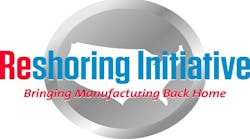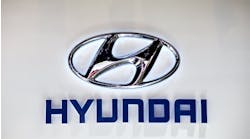America's Offshoring Debacle -- Accounting for What Happened
Let me be clear: When it comes to the reshoring debate, I’m an agnostic. I believe in numbers. And while not everything in business can be perfectly quantified, numbers help separate emotion and impulse from fact.
Evidence is mounting from surveys and direct statements by leading manufacturers, such as GE (IW 500/5) and Ford (IW 1000/6), that the flow of U.S. production overseas is leveling off and that domestic production is on the rise. There is a lot of emotion being generated about this, as there was when companies departed our shores. There is also some mystery and uncertainty about why this trend is actually happening and if it can be sustained.
Manufacturers are reinvesting here to more efficiently serve the world’s largest free market. That’s why they are back. They are not returning on an impulse or because of public pressure. But unlike when they left, this time they are measuring why they should return.
I can say with confidence that most manufacturing companies that left the U.S.—with a goal to ship products back—didn’t do much offshore accounting. They based their decisions largely on favorable piece-part costs (from low-detail bids) and on cheap, unburdened foreign-labor rates.
What they encountered offshore was an indirect labor burden of five-to-one; constant turnover, training costs and wage hikes; escalating shipping fees—and an impaired asset base back home.
Travel and other expenses were hidden in corporate budgets and were never placed on the piece part that first drew them to foreign soil.
Once their overheads started to skyrocket and operating profits plunged, however, those companies felt the “real” math like a stomach virus.
The lesson: even if you choose not to practice Total Cost of Ownership (TCO), your company will live or die by it anyway. So better do TCO with the joy of playing a favorite board game, or watch your profits tumble and competitors step ahead.
How do we measure the right things now and create a sustainable path? If your company is still silo based with design and procurement on opposite ends, then freely available TCO spreadsheet approaches, such as those championed by Harry Moser from the Reshoring Initiative, will allow you to be directionally correct in more of your forward assumptions. Then the next step is to build an integrated team that drills down into key operational data and can periodically refine and refresh the analysis.
Using TCO in Decision-Making
My company, Viatran, which is a worldwide maker of pressure and level transmitters for oil and gas services, steel production, injection molding, die casting, and chemical production industries, is using TCO aggressively. Let me tell you about our front-to-back plan.
For us, Total Cost of Ownership is the sum of the piece part, associated logistics and all of the soft costs inclusive of the decision to source an item into a specific geography. (In our growing markets, that means Malaysia, China and the U.S., equally.)
We never debate “offshoring” against “reshoring” or “in-shoring,” although we quantify and act on geographic risk when protecting our intellectual property. We are numbers-driven. What we are doing—because the numbers generally point us in this direction—is Build Where You Sell.
Build Where You Sell is what is increasingly happening in America and elsewhere. This is the essence of what Reshoring is. Seen in this light, it will be much easier to accept the new math of TCO, whether you are a company or a nation setting policy.
Back to explaining our plan: Viatran is expanding its definition of TCO to include not only the physical length of the ultimate supply-to-demand fulfillment line, but also the associated lead times of the entire process. That’s order-to-cash complete, full explosion of the Bill of Materials (and suppliers’ BOMs) in order to understand the total amount of time it takes to respond to a demand signal and the total amount of material liability within the supply pipeline.
Viatran believes that, just as we try to shorten the demand-fulfillment chain, we should also shorten the overall lead-time of the supply fulfillment change. This will result in more operating profit. It will also lead to better management of that operating profit because we won’t have to invest as much in inventory – why – because lead time is a component of ALL replenishment systems, whether it is safety stock, min-max, Kanban or eKanban.
If all this sounds like a regionalization “reshoring” pitch—it is. Currently, regional manufacturing and distribution is the quickest way to fulfill demand while minimizing risk. We are always striving to get closer to the customer—and in many of our instrumentation markets speed of delivery is the order winner.
Our goal is to be the most responsive business within the most cyclical markets, and to deliver the exact price and quality the market needs. This takes a concerted effort to reduce part count, “right-tolerance,” select commercial off-the-shelf (COTS) materials and components when they perfectly match requirements, lean the organization, do TCO, and more!
Why did I speak earlier about the integrated team? And what is the secret sauce to ending the silos between design and procurement?
TCO gives a company hard insight into the lifecycle of costs. There is a ledger that starts and ends with decision-enriching numbers. It helps one see the organization as a whole. But what is even more startling is the impact that robust product design has on operating profit and efficiency in every upstream department. Like the hidden costs that damaged the offshore movement, there are hidden efficiencies from a numbers-driven design effort that ignite cascading and far-reaching benefits.
Our teams benchmark the Viatran business process using TCO, and we benchmark the product creation process using Design for Manufacture and Assembly (DFMA). Consideration of total cost of ownership is said to go back to Napoleon and his concern for durability in cannons. TCO is mentioned in American business literature from the 1940s on. The Boothroyd Dewhurst product simplification and early costing tools defined the concurrent engineering movement of the late 1980s. Each is a proven business method in its area. Each is low-risk. Both need to be institutional for global companies.
What we have learned from DFMA is to simplify everything that shows a measured benefit, including our TCO. The vice presidents, product managers, operations personnel, engineers and supply-chain personnel all meet as an integrated group to score designs (ours and competitors’ products) with DFMA and look past the BOM and ERP readouts to see detailed estimates for manufacturing: tool-wear rates and material waste, process times and labor impact (everything missed from offshore bids).
Part consolidation oils the gears of our Lean and Value Engineering programs. Fewer parts, easier manufacture, fewer and shorter supply lines—more money. When you have part-count reduction as a mantra, you don’t have to chase after cheap labor. You can build where you sell. Human overhead is more a knowledge asset in a world where metrics matter and teams see excellence and cost avoidance as everyone’s work.
Our future steps will be to fully understand the role that design plays in generating business profits. I strongly believe that, given the problems encountered in the last decade or so by U.S. manufacturing, there will be a new emphasis on the numbers that count.
John Biagioni is the general manager of Viatran, a Dynisco Company, a manufacturer of pressure and level transducers and wireless technology.




